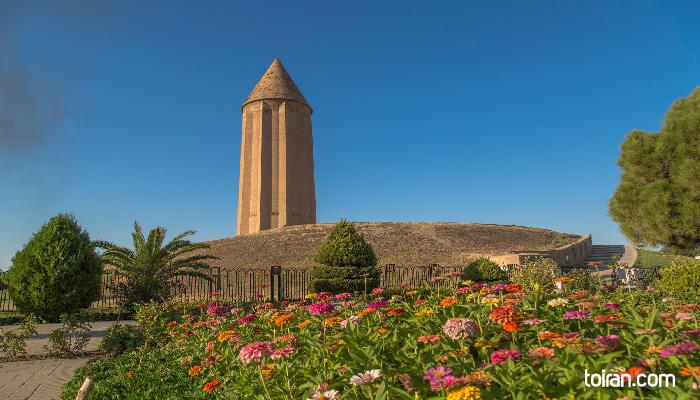Gonbad-e Qabus or Qabous Tower is believed to be the oldest brick funerary tower in the world. This 55-meter tower is located 3 kilometers from the old Ziyarid (930–1090) capital of Jorjan. The Ziyarid’s were the rulers of Gorgan and Tabaristan - a region that roughly encompassed the modern Iranian provinces of Mazandaran, Guilan, Golestan and northern Semnan as well as a small part of Turkmenistan- in the 11th century.
Qabous Tower was built on the order of Ziyarid ruler Qabus ibn Vushmgir or Wushmagir (?-1012), who is said to have been a courageous leader and a poet. He is said to have been laid to rest in this tower.
The tower, which is a masterpiece in early Islamic brick architecture, shows the development of mathematics and science in the Muslim world as well as the architectural cultural exchange between the nomads of Central Asian and the ancient Iranian civilization as it became a prototype for tomb towers in Iran, Anatolia and Central Asia.
Constructed on a 15-meter high hill, the structure consists of four parts: foundation, platform, shaft and dome. The tower raises from a ten-pointed star base and ends in an 18-meter conical dome, encircled by Kufic inscriptions in praise of Qabus ibn Vushmgir. The hollow shaft of the tower is covered in unglazed bricks, which were originally red but have turned to a golden yellow after centuries under the sun. The tower also has a form of Muqarnas decoration that experts say shows the earliest stages of the development of this decorative art in Iran.
Gonbad-e Qabus was registered as a UNESCO World Heritage Site in 2012.





